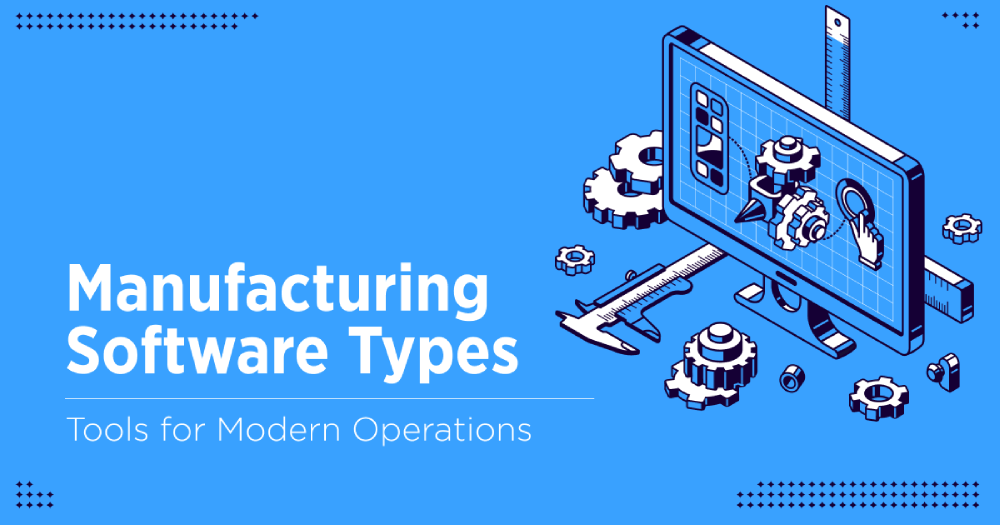
manufacturing software has evolved into one of the most trustworthy automation solutions for a variety of ERPs for manufacturing industries. Furthermore, since Industry 4.0, the fourth industrial revolution has arrived, the demand for automated systems has skyrocketed.
Manufacturing software has the potential to increase productivity and operational efficiency considerably. But what is manufacturing software, and how can it assist you in streamlining your operations?
From production planning to stock availability tracking, resource allocation, task delegation, and production routing, manufacturing ERP software companies automate production activities on the shop floor. The software not only simplifies but also unifies these operations, giving manufacturers complete, real-time visibility of all workflows through a single system.
Manufacturing systems are now as important as the machinery and heavy equipment that are used to make items. As a result, a New ERP system, large-scale manufacturing enterprises, as well as new medium-scale manufacturing businesses have been used it. This program is also for those of you who operate manufacturing or do import-export activities.
Also Read: What Software is Used in Manufacturing?
To know what manufacturing software is, you must first understand how it works and the benefits it provides to manufacturing companies.
Production planning, including resource allocation, staff preparation, time management, and production routing, is made easier using manufacturer software. As a result, this software can speed up the manufacturing process and reduce production time, allowing the organization to complete orders faster and focus on other valuable operations.
Online ERP Software can improve product quality in addition to speeding up a company’s production process. This is because these systems make it easier for companies to track product faults and problems. Manufacturer software can also detect precisely where the problem is occurring in the design or production process and make the necessary adjustments to ensure high-quality products. As a result of these features, sales will improve, as will customer happiness, and profits will rise.
Manufacturing systems enable producers to assess overall equipment effectiveness (OEE) at any time using real-time reporting tools, allowing them to discover problems earlier and prevent severe damage to varied equipment, ensuring that there is no room for unexpected downtime.
Manufacturer software may also detect bottlenecks early on, allowing companies to decide which operations generate revenue and which do not. Manufacturers can focus more on increasing the quality of their products and services as a result of the elimination of unprofitable businesses.
Advanced manufacturing software allows manufacturers to track the duration, the number of personnel involved, expenditures incurred, materials used, product life cycle, and internal and external transfers of production processes across numerous manufacturing plants. As a result, producers can examine operations from anywhere on their mobile devices using cloud-based production solutions.
Also Read: Benefits of ERP for Manufacturing Companies
Manufacturers may simply control production processes with the manufacturing plan function. These production operations include setting up production plans, deciding on product creation, and deciding on a completion deadline. The manufacturing plant is the first step in the manufacturing procedure.
Manufacturers can choose the number of goods they want to create using the manufacturing order feature. Manufacturers can also select what materials are required, who is responsible for the process, and how the production will be routed. To put it another way, the manufacturing order function provides a summary of the manufacturing process.
The work order function makes it easier for manufacturers to keep track of various needs as part of the semi-finished goods production process.
A Bill of Material (BoM) is a list of all materials and components utilized in the manufacturing process, and this includes the price and quantity. Producers can use this software’s Bill of Material (BoM) capability to automatically calculate material and production costs. Producers can also figure out the route a BoM belongs to.
Top Routing is a tool that allows manufacturers to plan out the steps necessary to generate final goods. It is crucial to the production process. This is because the production time is determined by the routing. Manufacturers can also use this functionality to establish the work center and time for each production stage.
A sophisticated reporting tool should be included in all manufacturing systems. Manufacturers can use the reporting tool to get real-time information on raw material and final product availability, product transfers, production processes, and OEE across different sites.
Codes are using by manufacturing organizations in their day-to-day operations. Manufacturers can use this functionality to construct several work centers or organizational units. It enables firms to assess efficiency, production capacity, and overall equipment effectiveness (OEE). Manufacturers can also use this functionality to calculate the time required for a single production and analyze downtime losses.
A manufacturing ERP system integration can significantly improve production floor efficiency and productivity. It is a better firm. If you want to automate your complete business process. To get comprehensive manufacturing ERP software solutions, call Autus Cyber-Tech at 7428824488.